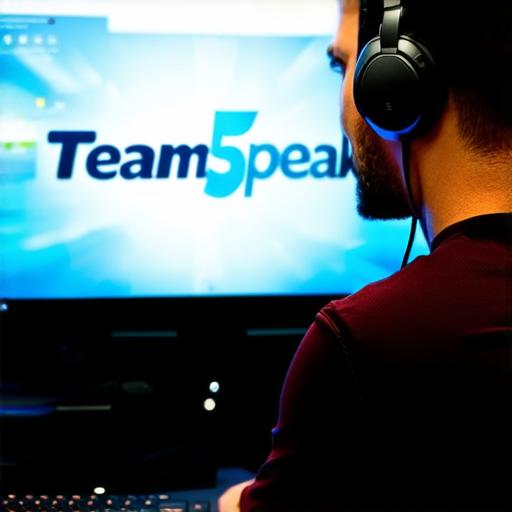Are you tired of using free Teamspeak servers that often crash, disconnect or have limited resources? It’s time to upgrade to a dedicated Teamspeak 5 server. In this article, we will walk you through the steps to set up a dedicated Teamspeak server that will cater to your team’s needs and ensure smooth communication.
Why Dedicated Server for Teamspeak?
Before diving into the steps of setting up a dedicated Teamspeak server, let’s first understand why a dedicated server is necessary.
- A dedicated server provides more resources, such as CPU power, RAM, and disk space, which can handle a larger number of users without crashing or lagging.
- A dedicated server allows you to customize the settings and configuration according to your team’s needs, such as changing the maximum number of users, setting up different channels, and enabling additional features.
- A dedicated server provides more security options, such as DDoS protection and firewall rules, which can help protect your server from hacking and other cyber attacks.
Choosing a Reliable Teamspeak Server Provider
The next step is to choose a reliable Teamspeak server provider. Here are some factors to consider:
- Reputation: Look for a server provider that has a good reputation, positive reviews, and a proven track record of providing quality service.
- Uptime: Choose a server provider that guarantees high uptime, typically 99.9%, to ensure your team can always access the server when needed.
- Support: Look for a server provider that offers responsive and helpful customer support, preferably 24/7.
- Customization: Choose a server provider that allows you to customize your server’s settings and configuration according to your team’s needs.
Setting Up Your Dedicated Teamspeak Server
Now that we have covered the basics let’s dive into the steps of setting up your dedicated Teamspeak server:
- Choose a Teamspeak Server Provider
Choose a reliable Teamspeak server provider based on the factors discussed above. Research and compare different providers to find the one that best suits your team’s needs.
-
Select a Server Plan
Once you have chosen a server provider, select a server plan that meets your team’s requirements. Some popular server plans include Basic, Standard, Premium, and Professional. Consider the number of users, resources, and features required for your team when selecting a plan.
-
Create an Account
Create an account with the selected server provider by filling out the required information, including your name, email address, and payment details.
-
Install Teamspeak Server Software
Download the Teamspeak server software from the server provider’s website and install it on your computer or server. Make sure to follow the installation instructions carefully to avoid any errors.
-
Configure Your Server Settings
Configure your server settings according to your team’s needs. This includes setting up different channels, enabling additional features, and adjusting resource limits. Be careful not to overload your server with too many users or resources.
-
Set Up Firewall Rules
Set up firewall rules to protect your server from hacking and other cyber attacks. This includes blocking unnecessary ports, enabling DDoS protection, and setting up passwords for admin access.
-
Invite Your Team Members
Invite your team members to join the server by sending them an invite link. Make sure to provide clear instructions on how to connect to the server and any required settings or configurations.
-
Monitor and Maintain Your Server
Monitor your server regularly to ensure it’s running smoothly and efficiently. This includes monitoring resource usage, checking for updates and patches, and responding to any issues that arise.
Real-Life Examples of Dedicated Teamspeak Servers
Let’s take a look at some real-life examples of dedicated Teamspeak servers:
- Choose a Teamspeak Server Provider
- The Gaming Community: A group of gamers who use a dedicated Teamspeak server to communicate and coordinate during gaming sessions. They customize their server settings to include different channels for different games, enable voice and text chat, and set up password protection for admin access.
- The Marketing Team: A marketing team that uses a dedicated Teamspeak server to collaborate on projects and brainstorm ideas. They configure their server settings to include different channels for different projects, enable screen sharing and file sharing, and set up resource limits to prevent lag or downtime.
- The Support Team: A support team that uses a dedicated Teamspeak server to provide customer support 24/7. They customize their server settings to include different channels for different customers, enable DDoS protection and firewall rules, and set up password protection for admin access.
FAQs
1. What is the difference between a free Teamspeak server and a dedicated Teamspeak server?
A free Teamspeak server is hosted by a third-party provider and has limited resources, while a dedicated Teamspeak server is hosted on your own server or a dedicated server provided by a third-party. A dedicated server provides more resources, customization options, and security features.
2. How do I choose the right Teamspeak server plan for my team?
Consider the number of users, resources, and features required for your team when selecting a Teamspeak server plan. If you need a lot of users or resources, consider a higher-tier plan such as Professional.
3. How do I set up firewall rules on my dedicated Teamspeak server?
Set up firewall rules to block unnecessary ports, enable DDoS protection, and set up passwords for admin access. You can use a third-party firewall software or the built-in firewall in your operating system.
4. Can I upgrade my Teamspeak server plan later if my team’s needs change?

Yes, most Teamspeak server providers offer the option to upgrade or downgrade your server plan as needed. Check with your server provider for details on their policy and pricing.</